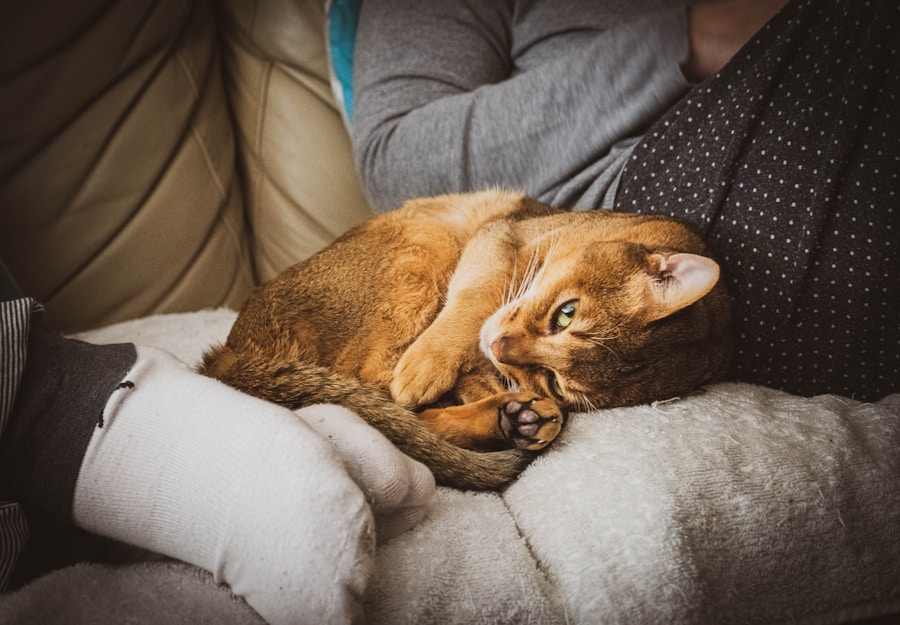Pet ownership is often romanticized, with images of playful puppies and cuddly kittens dominating social media feeds. However, the reality of bringing a pet into one’s home involves a significant financial commitment that extends far beyond the initial adoption or purchase fee. The costs associated with pet ownership can be categorized into several areas, including food, grooming, routine veterinary care, and unexpected medical emergencies.
For instance, a dog may require high-quality food that can range from $30 to $100 per month, depending on the breed and dietary needs. Additionally, grooming expenses can add up quickly, especially for long-haired breeds that require regular professional grooming. Beyond these routine costs, pet owners must also consider the potential for unexpected expenses.
Pets can develop health issues that necessitate emergency care or specialized treatments. For example, a sudden illness or injury could lead to veterinary bills that range from hundreds to thousands of dollars. According to the American Pet Products Association, the average annual cost of pet ownership can easily exceed $1,000 for dogs and $500 for cats when factoring in all necessary expenses.
This financial reality underscores the importance of understanding the full scope of costs associated with pet ownership before making the decision to adopt or purchase a pet.
Key Takeaways
- Pet ownership comes with various costs including food, grooming, and healthcare
- Pet insurance can help cover unexpected veterinary expenses and provide peace of mind
- Factors such as the pet’s age, breed, and location can influence the cost of pet insurance
- The average cost of vet bills can vary depending on the type of treatment and the pet’s health
- Comparing pet insurance premiums to potential vet bills can help determine the value of insurance coverage
- Managing pet healthcare costs can be done through regular check-ups, preventive care, and budgeting
- Budgeting for pet healthcare is important to ensure that unexpected expenses can be covered
- Making informed decisions about pet insurance involves researching different plans and understanding coverage options
The benefits of pet insurance
Pet insurance has emerged as a valuable tool for pet owners seeking to mitigate the financial risks associated with unexpected veterinary expenses. One of the primary benefits of pet insurance is that it provides peace of mind. Knowing that a significant portion of veterinary costs will be covered can alleviate the stress that comes with making decisions about a pet’s health.
For instance, if a dog requires surgery for a torn ligament, pet insurance can cover a substantial part of the bill, allowing owners to focus on their pet’s recovery rather than worrying about how to pay for the procedure. Moreover, pet insurance can encourage proactive healthcare. When pet owners know they have financial support for veterinary visits, they may be more inclined to take their pets for regular check-ups and vaccinations.
This preventive care can lead to early detection of health issues, ultimately resulting in better outcomes for pets and potentially lower overall healthcare costs. For example, a routine visit might reveal early signs of dental disease or obesity, allowing for timely intervention that could prevent more serious health problems down the line.
Factors that influence pet insurance costs

The cost of pet insurance can vary widely based on several factors, each contributing to the overall premium that pet owners will pay. One of the most significant factors is the age and breed of the pet. Younger pets typically have lower premiums because they are less likely to have pre-existing conditions or require extensive medical care.
Conversely, older pets may face higher premiums due to an increased likelihood of health issues. Additionally, certain breeds are predisposed to specific health problems; for example, large breeds like Great Danes may have higher insurance costs due to their susceptibility to conditions such as hip dysplasia. Another critical factor influencing insurance costs is the level of coverage selected by the pet owner.
Policies can vary significantly in terms of what they cover—some may include only accidents and illnesses, while others offer comprehensive coverage that includes wellness visits and preventive care. Higher deductibles and co-pays can also lower monthly premiums but may result in higher out-of-pocket expenses when care is needed. Pet owners must carefully evaluate their options and consider their financial situation when selecting a policy that best meets their needs.
The average cost of vet bills
Understanding the average cost of veterinary bills is essential for pet owners as they navigate their responsibilities. Routine veterinary visits typically range from $50 to $150, depending on the services provided and the location of the clinic. These visits often include vaccinations, wellness exams, and basic diagnostic tests.
However, as pets age or if they develop health issues, these costs can escalate dramatically. For instance, treating chronic conditions such as diabetes or arthritis may require ongoing medication and regular check-ups, leading to annual costs that can exceed $1,000. Emergency veterinary care represents another significant expense that pet owners must be prepared for.
Emergency visits can range from $300 to over $1,500 depending on the severity of the situation and the necessary treatments. For example, if a pet ingests a foreign object and requires surgery to remove it, the costs can quickly accumulate. Additionally, specialized treatments such as chemotherapy for cancer or advanced diagnostic imaging like MRIs can add thousands of dollars to a pet owner’s veterinary expenses.
These figures highlight the importance of being financially prepared for both routine and unexpected veterinary care.
Comparing pet insurance premiums to vet bills
When evaluating whether pet insurance is a worthwhile investment, it is crucial to compare the cost of premiums against potential veterinary bills.
Over the course of a year, this translates to an annual cost of approximately $360 to $840 for dogs and $180 to $480 for cats.
In contrast, a single emergency visit could easily exceed these annual premiums if a serious health issue arises. For example, consider a scenario where a dog develops a serious illness requiring hospitalization and treatment costing $3,000. If the owner has been paying an average premium of $50 per month for insurance over the year, they would have spent $600 on premiums.
In this case, having insurance would save them $2,400 in out-of-pocket expenses. Conversely, if a pet owner opts not to purchase insurance and faces multiple unexpected health issues throughout the year, they could find themselves facing thousands in veterinary bills without any financial safety net.
Tips for managing pet healthcare costs

Managing pet healthcare costs requires strategic planning and proactive measures from pet owners. One effective approach is to establish an emergency fund specifically designated for veterinary expenses. By setting aside a small amount each month—perhaps equivalent to what one would pay in insurance premiums—pet owners can create a financial cushion that allows them to handle unexpected medical emergencies without incurring debt or sacrificing their pet’s care.
Additionally, seeking out low-cost veterinary clinics or community programs can help reduce routine healthcare expenses. Many areas have nonprofit organizations that offer affordable vaccinations and spay/neuter services. Pet owners should also consider discussing payment plans with their veterinarians; some clinics may offer financing options that allow owners to spread out payments over time rather than facing a large bill all at once.
The importance of budgeting for pet healthcare
Budgeting for pet healthcare is an essential aspect of responsible pet ownership that often goes overlooked. Just as individuals budget for their own healthcare needs, it is crucial to allocate funds specifically for their pets’ medical care. This involves not only accounting for routine expenses such as food and vaccinations but also anticipating potential emergencies and chronic health issues that may arise over time.
Creating a detailed budget allows pet owners to track their spending and identify areas where they might save money without compromising their pets’ well-being. For instance, by researching different brands of pet food or exploring generic medications instead of name-brand options, owners can find ways to reduce costs while still providing quality care. Additionally, setting aside funds each month for anticipated veterinary visits ensures that when the time comes for a check-up or vaccination, there are sufficient resources available without financial strain.
Making informed decisions about pet insurance
When it comes to selecting pet insurance, making informed decisions is paramount for ensuring adequate coverage while managing costs effectively. Pet owners should begin by thoroughly researching various insurance providers and comparing their policies side by side. Key aspects to consider include coverage limits, exclusions for pre-existing conditions, waiting periods before coverage begins, and customer reviews regarding claims processing.
It is also beneficial for pet owners to assess their individual circumstances when choosing a policy. For instance, those with older pets or breeds prone to specific health issues may prioritize comprehensive coverage that includes preventive care and chronic condition management. Conversely, younger pets may benefit from basic accident and illness coverage at lower premiums while still providing protection against unforeseen events.
Ultimately, understanding one’s own financial situation and evaluating potential risks will guide pet owners toward selecting an insurance plan that aligns with their needs while safeguarding their beloved companions’ health.
If you’re interested in learning more about managing your finances, you may want to check out the article How to Fill Out an Auto Insurance Form. This article provides valuable information on the importance of auto insurance and how to properly fill out the necessary forms. Understanding the ins and outs of insurance can help you make informed decisions about protecting your assets and managing unexpected expenses, just like with pet insurance and vet bills.
FAQs
What is pet insurance?
Pet insurance is a type of insurance policy that helps cover the cost of veterinary treatment for your pet in case they get sick or injured.
How do pet insurance costs compare to vet bills?
Pet insurance costs can vary depending on factors such as the age and breed of your pet, the coverage options you choose, and the insurance provider. On the other hand, vet bills can also vary widely depending on the type of treatment needed for your pet. In general, pet insurance can help offset the cost of vet bills, especially for unexpected and expensive treatments.
What are some factors that can affect pet insurance costs?
Some factors that can affect pet insurance costs include the age, breed, and health of your pet, the coverage options you choose, and the insurance provider. Additionally, some insurance providers may offer discounts for insuring multiple pets or for enrolling your pet at a young age.
What are some common coverage options for pet insurance?
Common coverage options for pet insurance include accident and illness coverage, wellness coverage for routine care such as vaccinations and check-ups, and additional coverage for things like dental care and alternative therapies.
Is pet insurance worth it?
Whether pet insurance is worth it depends on your individual circumstances and your pet’s health. Pet insurance can provide peace of mind and help offset the cost of unexpected vet bills, but it’s important to carefully consider the coverage options and costs to determine if it’s the right choice for you and your pet.


